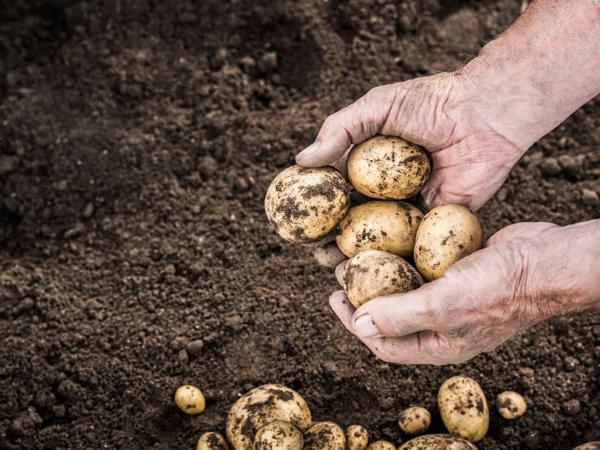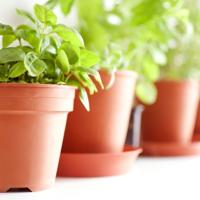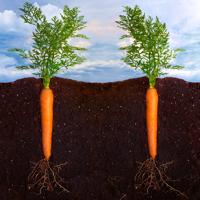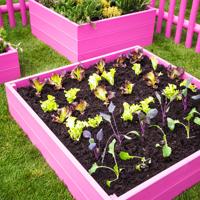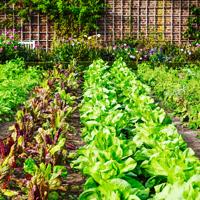Potatoes are a staple in many kitchens worldwide, offering versatility and nutrition in a simple, humble package. Growing your own potatoes can be a rewarding and educational experience. Whether you’re a seasoned gardener or a complete beginner, the process of planting and harvesting potatoes can be relatively straightforward, with a few key steps to guide you.
Choosing the Right Variety
The first step in your potato-growing journey is selecting the right variety for your needs and climate. Potatoes come in many types, generally classified into early, mid, and late-season varieties. Early varieties, such as ‘Red Norland’ or ‘Yukon Gold’, can be ready for harvest in as little as 70 to 90 days. Mid-season and late-season varieties, such as ‘Russet Burbank’, may require up to 120 days.
Consider the culinary use, disease resistance, and storage qualities when choosing your potatoes. Visiting a local nursery or talking to experienced gardeners in your area can provide valuable insight into what might thrive best in your region.
Preparing the Planting Area
Potatoes grow best in well-drained, fertile soil rich in organic matter. A pH between 5.0 and 7.0 is generally ideal. If needed, amend your soil with compost or well-rotted manure to improve soil quality and drainage.
Choose a site that receives full sun. Potatoes need at least 6 to 8 hours of sunlight per day for optimal growth. Rotate your potato crops annually to minimize the risk of disease buildup in the soil.
Planting Potatoes
-
Seed Potatoes: Purchase certified seed potatoes from reputable sources. Avoid using grocery store potatoes as they may be treated to prevent sprouting.
-
Cutting and Healing: If your seed potatoes are large, cut them into pieces with at least one or two eyes per piece. Let them heal in a dry, dark place for 1 to 2 days to form a protective layer, reducing rot risk.
-
Planting: Plant your potatoes in trenches or raised rows. Dig 6 to 8 inches deep, spacing pieces about 12 inches apart, with rows approximately 2 to 3 feet apart for squeezing ease. Cover with about 3 to 4 inches of soil.
Caring for Your Potato Plants
-
Hilling: As potato plants grow (about 6 to 8 inches), gently mound soil around the base, covering the lower 2 inches of the plant. This “hilling” encourages tuber production and protects them from sunlight.
-
Watering: Potatoes need about 1 to 2 inches of water per week. Maintain consistent moisture but avoid waterlogging, which can lead to rot.
-
Mulching: Applying organic mulch like straw or shredded leaves helps retain moisture, suppress weeds, and keeps the tubers cool.
-
Fertilizing: Potatoes require nutrients for tuber development. Organic fertilizers or companion planting with legumes can enrich the soil naturally.
Harvesting Potatoes
Potatoes are ready for harvest when the plant foliage turns yellow and dies back, usually a couple of weeks after flowering. For new potatoes, you can harvest them 2 to 3 weeks after the flowers appear, while leaving the rest to mature for storage.
Gently use a garden fork or spade to lift the plants and avoid damaging the tubers. Brush off excess soil and allow them to cure in a cool, dark place for about a week.
Storing Potatoes
Store your harvested potatoes in a dark, cool (40-50°F), and well-ventilated area. Avoid washing them before storage as this can encourage rot. Properly stored, potatoes can last for several months.
Personal Notes
Growing potatoes in my backyard has been a truly gratifying journey. Observing the lifecycle from planting to the harvest provides a profound connection to the food we consume. While challenges like pests and unpredictable weather sometimes arise, the rewards of savory home-cooked meals using produce straight from the garden remind me why I started this endeavor.
References
- “Growing Potatoes in the Home Garden” by North Carolina State Extension. NC State Extension
- “Potato Growing Advice” from the Royal Horticultural Society. RHS
- Rodale’s Basic Organic Gardening: A Beginner’s Guide to Starting a Healthy Garden by Deborah L. Martin
Growing potatoes can be an enjoyable adventure, offering not only a reliable food source but also enriching your gardening knowledge. With patience and care, your efforts can culminate in a fulfilling garden-to-table experience.
